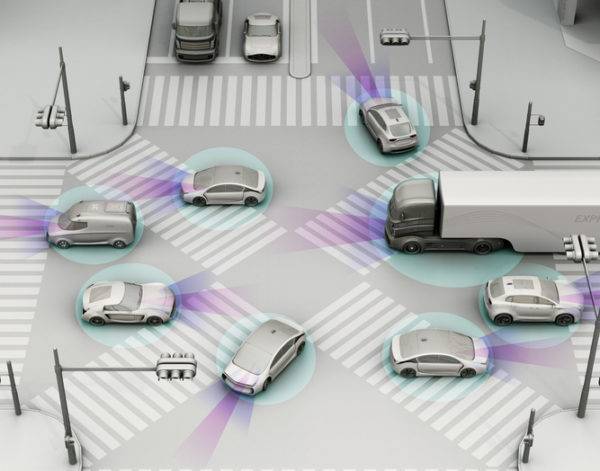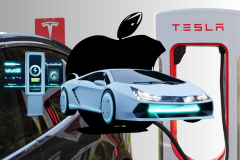Autonomous transportation has been on a tear recently. Maybe it’s fascination with Tesla and its CEO, Elon Musk. Maybe it’s excitement about the future. Regardless, the news flow has been a torrent. Most of the automotive majors – GM, Nissan-Renault, Jaguar, and Volkswagen, to name a few – have all made big announcements around autonomous development in the past month alone.
Getting in the action, Congress has ramped up its efforts on national policy for autonomous vehicles. Specifically, the Senate has created principles to guide federal legislation on autonomous vehicles, and a bundle of bills introduced in the House would pave the way for federal regulators to tackle this area. It’s a big opportunity.
As our politicians and policy makers turn toward that task, here are several key items to consider.
#1: Think beyond autonomous human transport
Our fascination with a future in which autonomous vehicles drive us around town diverts our attention from a broader conversation on automation.
We’re over-indexed on autonomous transportation. We’re under-indexed on autonomous everything else.
The robots are here already. Food Deliveries. Landscaping. Logistics. Security. Garbage collection. Car valets. And it’ll go well beyond these, to courier services, events, construction, medical devices, maintenance, repair, insurance services, media, entertainment.
In tackling rules for autonomy, we need to tackle allowances and operating bounds for autonomy broadly. These “robots” will share roadways and rights of way with autonomous transport vehicles. That needs to be orchestrated, not an afterthought.
Furthermore, legislation should address both ground and airborne autonomous robots. The rules for smaller grounded robots need to extend to sidewalks and even hallways. For airborne robots, the rules need to address airways above public rights of way.
Understanding the stakes, several states, including Virginia, Idaho, Wisconsin, and Florida, are getting ahead of this game and have passed legislation allowing autonomous deliveries. Several others are not far behind.
It’ll prove very impactful to create a national framework for autonomous vehicles that extends well beyond deliveries before the patchwork of state approaches bogs down overall progress.
#2: Address the supporting infrastructure
The focus on autonomous to date has been most heavily on the vehicles themselves, without much consideration for the supporting infrastructure needed to make a reality of the smart mobility future.
We need our transportation network to be informed by networked intelligence nodes that extend each vehicle’s sensor sight. We need our transportation network to support more fluid charging models that don’t require vehicles to “return to base” every time batteries get low.
That means we need to address the infrastructure around transportation arteries and intersections, especially concerning sensors, communications and charging.
#3: Streamline deployment of 5G
Simply put, we need a higher-speed, lower-latency communications network with better coverage than we currently have.
5G is going to be the smart mobility enabler. We absolutely need 5G speeds paired with tiered processing architectures to responsively handle the volumes of data that are coming from autonomous systems. Plus, we’ll need new communications capabilities to grow the new services that autonomy will uncover.
We’ve failed if network latency is the new distracted driving.
Reasonable allowances for, and acceleration of, 5G deployments along major conduits and roadways should be part of thoughtful legislation on autonomy. Bonus for the politicians out there — according to Accenture, 5G will be a job creator.
#4: Build out the external sensor network
We’ll want to augment vehicle information systems with stationary sensors and information systems to provide intelligence on roadways ahead.
No robot is an island.
External sensors and monitoring have to be part of the package. Throughways that are better instrumented, monitored, and managed should receive broader allowances for the development of autonomy.
#5: Deploy ubiquitous EV charging
Lastly, we need to think about public charging infrastructure for autonomous vehicles. It will be a complete disaster if every vehicle needs to return to base every time charge wanes. Unnecessary congestion and hamstrung opportunity must be avoided.
The network will be the charger.
Legislation should include considerations and motivations to build electric charging infrastructure along city routes and corridors — particularly wireless charging infrastructure, where bots and BMWs alike can during the course of daily routes. Federal support to further develop wireless charging would be a boon.
For better or for worse, autonomy is coming. It’ll be developed domestically, or it’ll be developed elsewhere. We want to win the race to own autonomy and robots and supporting infrastructure. It’s all about seizing the opportunity ahead.
We can spend our energy debating about the jobs of the past or focus on keeping the ones of the future. Autonomy is a meaty future manufacturing target for jobs and economic acceleration. Let’s grab it.










